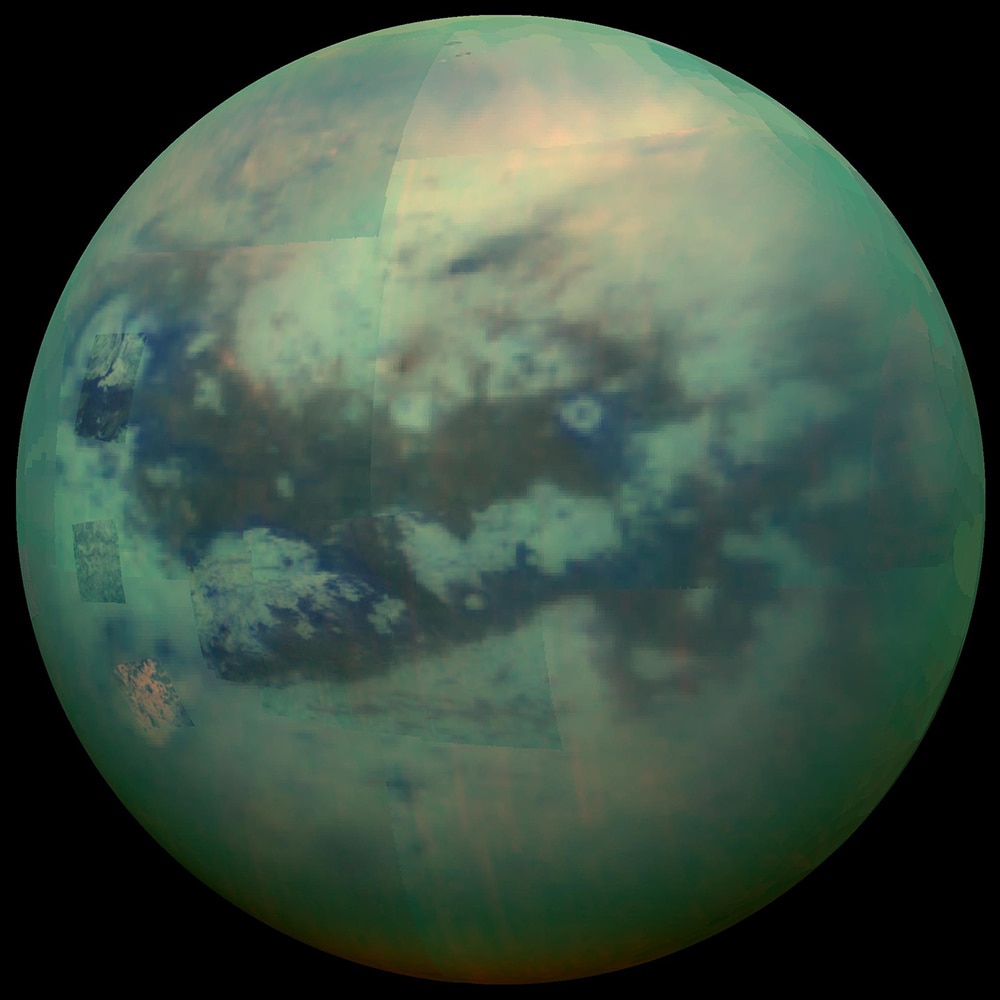Create a free profile to get unlimited access to exclusive videos, sweepstakes, and more!
Titan has geological features eerily similar to those on Earth
Alien world of Titan is more like Earth than you'd think.

With methane and ethane raining down on its surface and forming thick clouds in its atmosphere, Titan seems about as far away from an Earthlike body as you can get — or does it?
Humans could never survive on Saturn's moon, Titan. However, if you look closer, there are some things you would recognize. It’s kind of like Alan Tudyk’s extraterrestrial expat in Resident Alien, who might feel alienated on Earth but still finds his way around well enough, which may or may not indicate he might have come from a planet that at least has something in common with ours. Take away the lethal atmosphere, and the landscapes on Titan might remind you of something. Titan has canyons. It has sand dunes, lakes, rivers, and oceans. You know, like Earth.
The only thing that has been confusing about the reflections of Earth seen on Titan was how they could form when they were made of such different stuff. Those features that Earth and Titan have in common are formed from inorganic silicate grains, such as quartz, while the particles that form the terrains of Titan are made of much more fragile organic hydrocarbons. Geologist Mathieu Lapôtre of Stanford University, who led a study recently published in Geophysical Research Letters, has now figured out how Titan’s landscapes could have possibly taken shape, even if they were built from other substances.
“The primordial difference in the composition of geological materials on Titan is due to its distance from the Sun,” he told SYFY WIRE. “Despite the radically different chemical composition of materials, the same laws of physics shape its landscapes as those on Earth.”
Earth’s thick atmosphere makes wind blow and flows of liquid possible on the surface. So does Titan’s, though it’s freezing over there. Though the liquids, mainly methane and ethane, are hydrocarbons, they still flow, and ices in its sediments are thought to behave much like rock on Earth. This is why the landscapes on Saturn’s moon are remarkably similar to those on our own planet. Mars is the only other body in the solar system known to have a surface that is remotely similar, and while there is no longer liquid water on the Martian surface, evidence unearthed by Perseverance has revealed that Jezero crater was once an enormous lake.
Observations from Cassini were combined with models of the atmospheric circulation above Titan for Lapôtre and his team to get an idea of how frequently weather events, such as wind and surface flows, would move sediments on the surface of Titan. There was just one problem. How could sediment grains that would break down much more easily than silicates on Earth be pushed around so much and stay intact? They needed a model for grains that held up.
“Together with a new model for how sediment grains may form on Titan, we were able to make predictions of the types of sediments or sedimentary rocks that would form as a function of latitude,” said Lapôtre. “These predictions match the observed distribution of Titan's terrains.”
The researchers found an answer in a type of sediment right here on our planet. Ooids are tiny, spherical grains that typically form in the shallows of tropical seas. When calcium carbonate in the seawater attaches to a quartz grain in layers, this is known as chemical precipitation. Phenomena such as storms and waves will smash the grains into each other and erode them. This makes the growth slow down, but eventually, the process leads to consistent grain size, which might be why dunes exist on Titan. It is also possible that grains fuse together when being carried by the wind, which makes up for anything that was eroded away.
NASA’s Dragonfly quadcopter, which is set to launch in 2027, will explore the surface of Titan so it can see what is really happening on this strange but oddly familiar moon. Lapôtre and his team will do everything they can on Earth until then. The mechanical properties of materials on Titan’s surface are still mostly unknown, but it is possible to hypothesize about them after experimenting with materials on Earth that are thought to be at least somewhat close.
“Once we have a better sense of the mechanical properties of Titan materials and the processes that shape Titan's landscapes, we will be able to look at ancient surface deposits or landforms on Titan and decipher clues about Titan's geologic and atmospheric past,” he said.
Somewhere on that frozen surface or in those poisonous seas, there might even be life-forms waiting to be found.



























